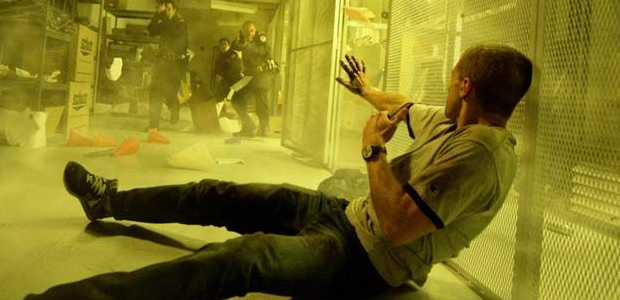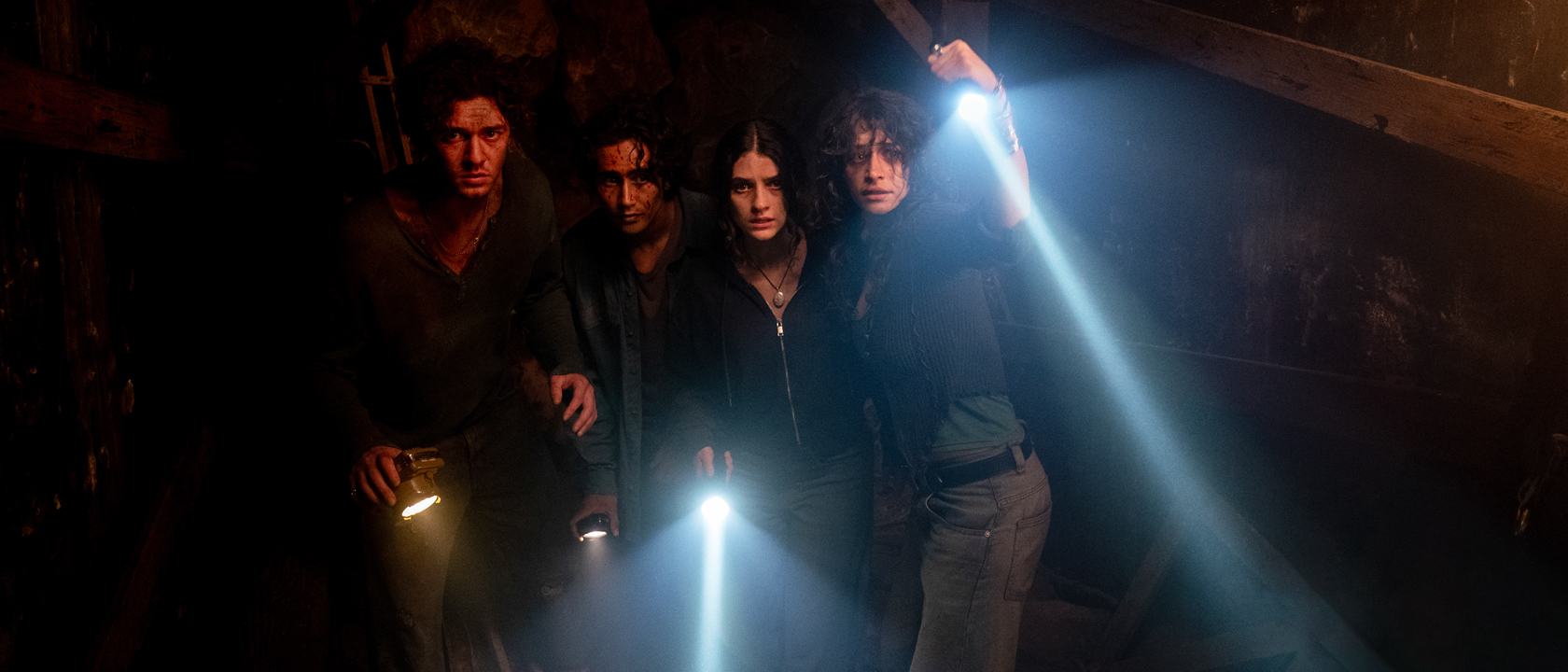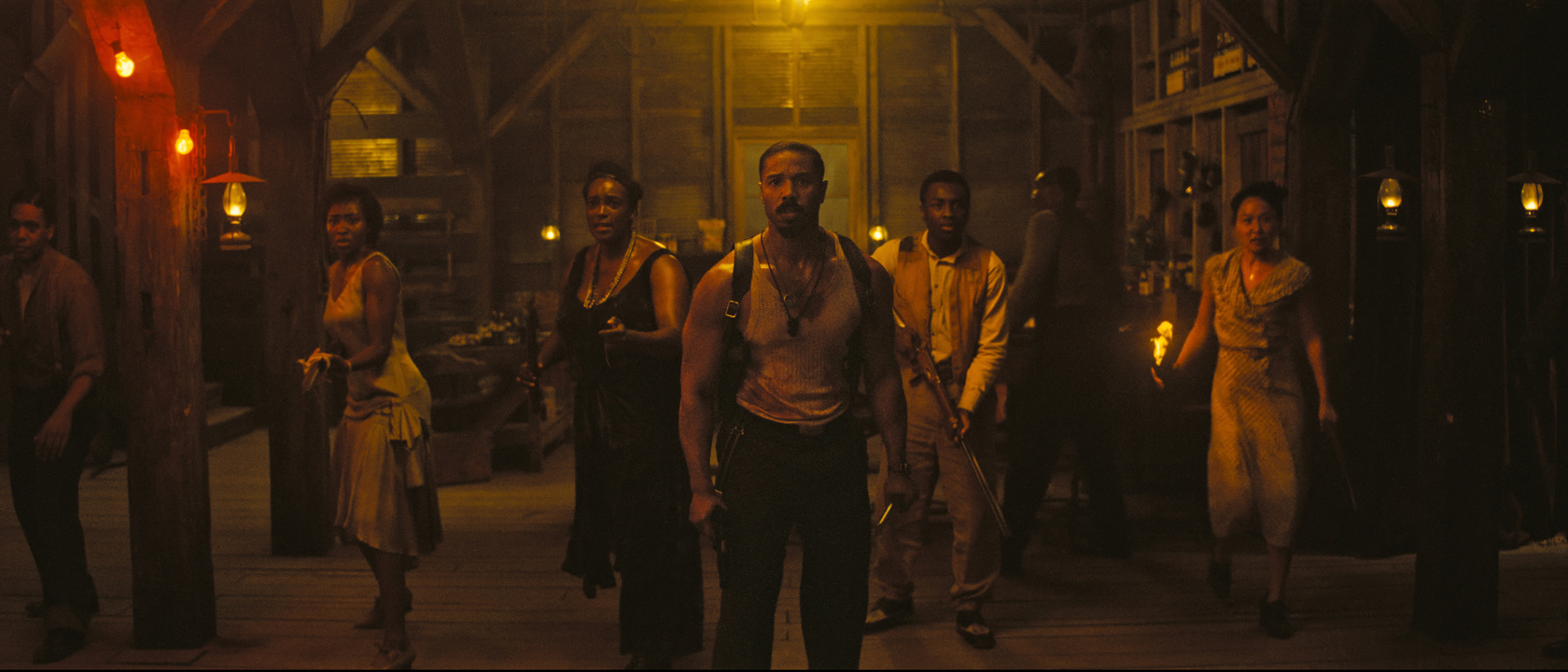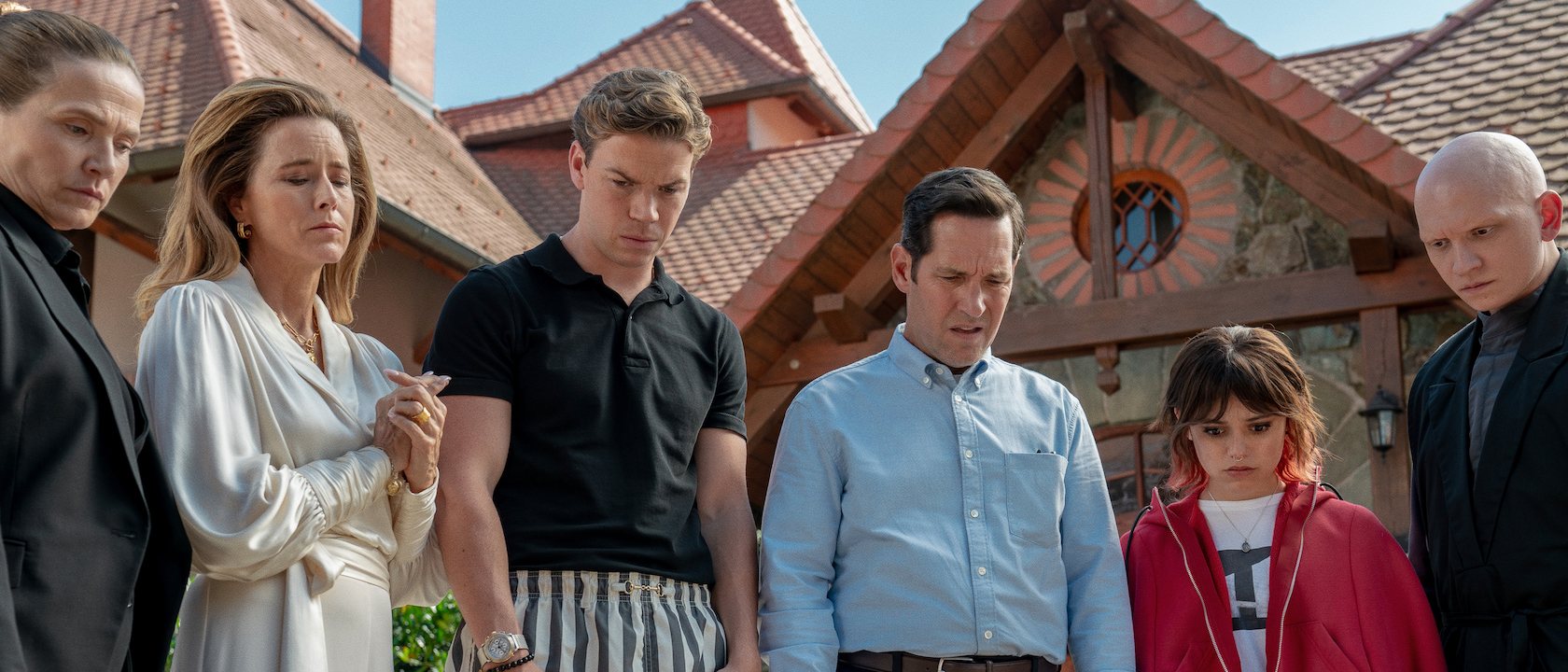Project Almanac is Primer for the Cloverfield crowd. Sort of fun but undeniably flawed, the film has an intriguing time-travel premise that it commits to for half the movie’s run time before mysteriously giving up. You get the sense that trying to maintain the twisting timeline was too exhausting, and the creative team assumed its core millennial audience wouldn’t sweat the details. Almanac basically pretends to be intelligent long enough to get our hopes up, then reveals its true colors as a superficial, silly genre rip-off aimed at teens. (Michael Bay co-produces, while MTV Films and Platinum Dunes present, so shame on me for not anticipating the inevitable.) By the time Project Almanac rushes to its anti-climactic ending, you’ll be wishing you had your own time machine to jump back about 30 minutes and correct a few of the movie’s crucial mistakes.
The movie’s hero is David Raskin (Jonny Weston), a likable high school inventor/bookworm whose delight over an MIT acceptance is dashed by the knowledge that his single mom can’t afford the tuition. While digging through his deceased dad’s unfinished research in hopes of earning a new scholarship, David unearths an old video camera that has tape from his seventh birthday party. The nostalgia of the milestone moment is drained, however, once David spies his current form walking through the background of the 10-year-old footage.
How is that possible? David and his tech-savvy teen cohorts start digging through the dead dad’s basement laboratory – which, I suppose, hasn’t been touched in the decade since dad’s death, but stop asking questions and just go with it, OK? They coincidentally discover that David’s father was dangerously close to completing work on a temporal relocation device. That means time travel. Since they have the blueprints in their hands, David and his crew begin to experiment, and before you can say flux capacitor, they’re successfully traveling back in time (with increasingly disastrous results).
So far, so good. David, it should be noted, is a welcome role model in the teen-thriller genre, favoring intelligent pursuits (like an MIT scholarship) and getting by on brain power in an age of decreased attention spans. His cohorts amount to replicas of the Big Bang Theory cast, but the “team” has good chemistry and first time director Dean Israelite keeps his foot on the gas pedal so we barely have time – no pun intended – to stop and ponder the various plot holes that could pull Project Almanac’s plug. The movie does feel like a bit of a relic for its unnecessary reliance on hand-held cameras – the bane of the tired found-footage genre. There’s no credible reason given for the use of “found footage” in Project Almanac, and the gimmick adds nothing original to the already-clever premise. If anything, it’s a visual obstacle to endure, and one that distracts from what could have been a smarter-than-expected time travel lark.
You can pinpoint the moment Project Almanac loses its way, and I have to start spoiling from here on out, so stop reading if you plan to attend despite my two-star rating. The movie’s fork-in-the-road moment is the live concert featured heavily in the trailers – a sequence that feels like it runs for 30 minutes, and a blatant rough patch in what was a swiftly-moving, glossy but passable exercise. It’s during this rowdy excursion that David fails to capitalize on his one moment to consummate a relationship with Jessie (Sofia Black-D’Elia), the hottest member of their Scooby Gang. Saturated in regret, David breaks his own rules to travel back to that moment and live the concert again. His new actions lead to romance, but as anyone who has watched a time-travel movie knows, he alters the timeline.
That’s what Project Almanac is ultimately about? Winning over the hot girl? What happened to solving the mystery of why David was even at his seventh birthday party? What about the tantalizing clues pertaining to David’s father’s research, and the watch dad gave his son on the fateful day he disappeared? That premise dripped of potential, and could have led to a better movie if properly explored. Instead, it’s shelved so that the Catfish-watching crowd can watch actors pretending to have fun during a lengthy party scene. Sad.
In its closing moments, Project Almanac tries to generate tension by butterfly-effecting the audience into submission, but the consequences of David’s action raise more questions than the movie’s able to answer. Still, there’s hope for the future of the teens who are sure to be in the theaters watching this film. Israelite and screenwriters Andrew Deutschman and Jason Pagan name-drop numerous time-travel staples throughout their movie, referencing everything from Rian Johnson’s Looper to Groundhog Day and Bill & Ted. If we’re lucky, a butterfly effect of Almanac will be curious audience members renting those great films, to see how time travel should be handled on screen.

Sean O’Connell is a journalist and CinemaBlend’s Managing Editor. Having been with the site since 2011, Sean interviewed myriad directors, actors and producers, and created ReelBlend, which he proudly cohosts with Jake Hamilton and Kevin McCarthy. And he's the author of RELEASE THE SNYDER CUT, the Spider-Man history book WITH GREAT POWER, and an upcoming book about Bruce Willis.











